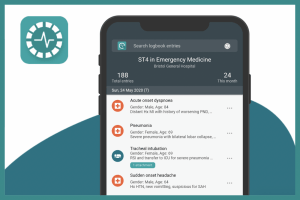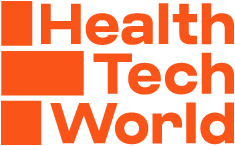
Dr Idris Harding, co-founder and CMO at Logitbox, speaks on how building “Strava for Doctors” empowers doctors and enables data driven transformation of healthcare.
Our healthcare system is reliant upon a superb workforce of clinicians, dedicated in pursuing the expertise and experience needed to deliver the best in medical interventions and care.
Every year, thousands embark on medical training – from students and junior doctors, to the senior doctors on specialist pathways leading to the echelons of consultant status. They participate in a rapidly evolving healthcare system that is experiencing widespread technological advancement.
In today’s digital world, performance data is a universal building block that enables professionals to become their best.
With the abundance of apps in the health and fitness domain, you would be hard pressed to meet a professional athlete not recording their personal training, monitoring their physical progress, setting goals or analysing their past year of activity.
Yet, many professional doctors lack the basic tools to record, analyse, compare and subsequently improve their personal clinical performance.
On the flip side of the coin, the medical training system also lacks the numbers to effectively evaluate its success in providing rigorous training for clinicians.

The paper scramble
As a consultant cardiologist with responsibilities for training and medical education, I am constantly frustrated that clinical performance tracking practices have not evolved since my training days.
When I started my medical Senior House Officer (SHO) training rotation in 2005, I received a ring binder from the Royal College of Physicians (RCP) to keep my medical portfolio and logbook.
Practical skills were acquired early in training and the expectation was that even very junior doctors would be competent across a range of practical skills including some fairly invasive medical procedures.
I’d already learned lumbar puncture from my SHO on my first set of night shifts the previous year; on my first day as an SHO we quickly established that I’d done more Seldinger chest drains than my registrar, so I taught him.
I didn’t learn central venous access until my second year of SHO jobs, which I thought was ridiculously late. I’m not sure a consultant saw me doing any of these procedures until I worked on ICU in my fourth postgraduate year, yet somehow my RCP folder included mostly consultant signatures attesting to my competence.
On the whole, when it came to providing evidence, I scrambled together pieces of paper and somehow muddled through. It is much the same for many clinicians today.
Both the Royal Colleges’ “Modernising Medical Careers” review (2005) and Health Education England’s Shape Of Training review (2013) have advocated a move towards “competency based progression”. However, current systems for recording this fall painfully short. The e-portfolio used in the NHS builds on the “portfolio” portion of my earlier RCP ring binder, but does not provide anything like a logbook of experience.
Some individual faculties (surgery, radiology, ophthalmology and endoluminal gastroenterology) have introduced their own supplementary systems. The usefulness of these has varied hugely and they are narrowly defined to their niche areas.
This adhoc approach to an individual’s clinical performance data contrasts starkly with the NHS’s strong foundation elsewhere. Whilst the performance of my outpatient clinic is tracked via a comprehensive online dashboard capturing waits, clinic volumes and diagnostics availability, trainee doctors don’t even have a recommended format for clinical activity and performance data to be collected, let alone a system to slice and dice the data in useful ways.
Building a “Strava for doctors”
Ten years ago, with the analogy of the professional athlete in mind, our team set out to develop the world’s best clinical logging platform for doctors. Senior medics across a range of specialities have contributed to Logitbox’s highly intelligent back-end database that breaks down the nuances of clinical procedures, enabling a high-precision, secure log book.
We now have over 270,000 medical logs and over 10,000 users. Nearly 4000 additional procedures have been suggested by our user community.
It is a matter of some pride to our development team that our current product is used most widely by Emergency Medicine, Cardiology and Interventional Radiology trainees: three specialties where throughput is high and time is scarce.
It’s particularly rewarding for me to read feedback from people who use it on the fly in the midst of busy shifts saving lives.
Our initial primary aim was to improve data capture. Put simply, in a high throughput specialty nobody has time or inclination to record 27 detailed data fields each time they see a patient or perform a procedure.
We offer a quickfire way to log that a patient has been seen or a procedure has been done, with entry review at a later date to verify and record late complications.
Now, more than a simple procedural logbook, Logitbox is encrypted, fast, searchable, produces sophisticated user reports and adheres to the myriad of GDPR and PID laws.
Its offline capability and data synchronisation allows doctors to input procedures in the basements of hospitals when connectivity fails, or on the tube en route home after a long night shift.
Doctors can access sophisticated reports for a full analysis of their clinical and non-clinical activity, admissions and clerking, research and CPD. Where Strava’s “Your Year in Sport” email tells me I need to work less and run more, my reports now showcase over 2000 procedural entries – hugely satisfying.
Clarity and transparency for medical training
Logitbox has also made headway in bringing transparency to a clinician’s training journey. Trainees are badly served by existing data structures in the NHS because they move regularly between different trusts, and progress through complex stages of training.
In remedying this, our team have branched out to assist both UK and European universities in their transition to integrate reflective logbooks into their standard course practices. Our work with the
Breast Ultrasound Programme at the University of East Anglia will allow around 400 trainee sonographers per year, drawn from all over Europe, to record and submit their training logbooks for remote review.
My personal experiences using Logitbox data to feed back on the quality of my own training opened my eyes to the power of a data driven approach to medical education.
When moving to a new hospital, my operating volumes dropped dramatically. A graph of my procedural numbers by month quickly confirmed I was being underserved and appropriate interventions were put in place. Had I not been able to evidence this, in such a cut and dry manner, I could quickly have fallen behind the experience offered my peer trainees elsewhere.
Likewise, other medical trainees can use Logitbox to hold their training bodies and supervisors to account.
As it indirectly generates a massive dataset on the quantity and quality of medical training, the incidental data we collect regarding volumes of procedures, how many days in a week a trainee gets to practice their new skills, and so on, gives us valuable insights into the state of a training environment. This data can be fed back to drive improvements.
Data driven change by a fluid workforce
Let’s be clear; seeing individual level performance gains for clinical practitioners, and increasing transparency and quality in medical training will produce cumulative benefits for our whole healthcare system. The potential for driving real change is immense.
Our doctors are fluid actors in our healthcare system. Barriers between hospital trusts and even between countries of practice disappear, if the logbook is suddenly a passport carried by the individual, kept consistently using the same technology regardless of where they work or what they do.
This in turn opens the door to an era of quantitative educational research, using trainee generated data to track the real-world effects of pedagogic changes, and indeed the performance of clinicians in different hospital trusts, areas of the UK and indeed, different countries.
So much of what we do in the NHS is already driven by high quality data analysed in creative and powerful ways. The NHS People Plan has put growth for the future at the forefront of NHS workforce planning, with a recognition that education and developing new skillsets is central to attracting and retaining the best people.
Like the high performance athlete, it’s high time that we equipped our clinicians with the tools they need to reach their full potential. We are able to achieve this, whilst also unlocking the door to enhanced medical training, and generating data and insights that will drive transformations of the whole system for the better.
Dr Idris Harding, 2022





